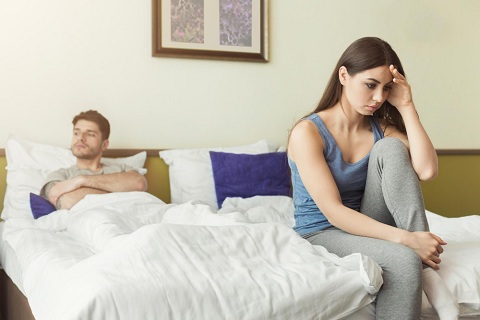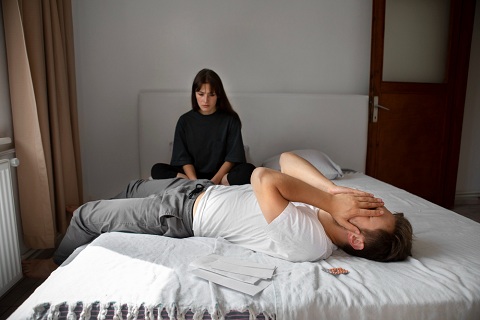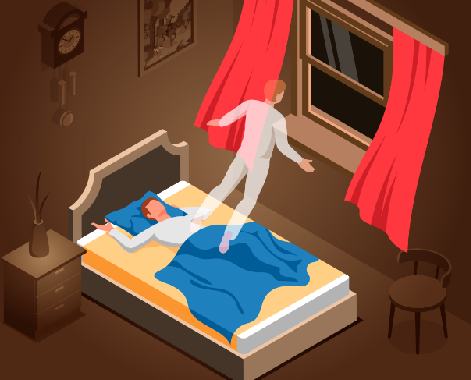Hypoactive Sexual Desire Disorder (HSDD) is a condition characterized by a persistent lack or absence of sexual fantasies and desire for sexual activity in women. This article delves into the nuances of HSDD, including its symptoms, causes, diagnosis, treatment options, and the importance of seeking professional help.
HSDD is a complex sexual health issue that can significantly impact an individual’s quality of life and intimate relationships. It is essential to understand the nature of HSDD to address it effectively.
Understanding HSDD Symptoms
Lack of Interest in Sexual Activity
One of the primary symptoms of HSDD is a persistent lack of interest in engaging in sexual activities. This can manifest as a disinterest or reluctance to initiate or participate in sexual encounters.
Emotional Impact
Emotional distress related to sexual desire includes feelings of frustration, guilt, sadness, or anxiety due to a lack of interest or satisfaction in sexual activities.
Relationship Effects
HSDD can strain intimate relationships, leading to communication issues, decreased intimacy, and potential conflicts related to differing sexual desires and needs.
Dislike for partner
Strong dislike for parter, if the partner approaches or expresses interest in having sex then quick reacting negatively.
Causes of HSDD
Psychological Factors
Psychological factors such as stress, anxiety, depression, mental shocked, past trauma, body image issues, and relationship problems can contribute to HSDD.
Hormonal Imbalance
Hormonal imbalances, particularly fluctuations in estrogen and testosterone levels, can affect sexual desire and arousal in women, contributing to HSDD.
Medical Conditions
Certain medical conditions such as diabetes, thyroid disorders, and neurological disorders can also impact sexual desire and contribute to the development of HSDD.
Social and Cultural Influences on HSDD
Social and cultural factorscan impact the experience of HSDD. Societal norms, expectations, cultural taboos, and stigma surrounding sexuality can contribute to feelings of shame or inadequacy in individuals with HSDD. Creating a supportive and understanding environment is crucial in addressing these social influences.
Diagnosis and Assessment of HSDD
Diagnosing HSDD involves a comprehensive assessment that may include a medical history review, physical examination, psychological evaluation, and laboratory tests to rule out underlying medical conditions or hormonal imbalances.
Treatment Options for HSDD
Behavioral Therapies
Behavioral therapies such as cognitive-behavioral therapy (CBT), sex therapy, and couples counseling can help address psychological factors contributing to HSDD and improve sexual communication and intimacy.
Hormone Therapy
Hormone therapy, including the use of female hormone-based treatments, may be prescribed to address hormonal imbalances contributing to HSDD.
Medications
Certain medications, such as flibanserin (Addyi) and bremelanotide (Vyleesi), are approved for the treatment of HSDD and can help increase sexual desire in some individuals.
Communication and Education
Open communication with healthcare providers and partners, along with education about HSDD, can reduce stigma and improve treatment outcomes.
Lifestyle Changes
Lifestyle modifications such as stress management techniques, regular exercise, adequate sleep, and healthy dietary habits can also support overall sexual health and well-being.
Tour
Change of place sometimes getting out of the monotony of family life, and going to a beutiful touristic area for a few days, gives you mental peace which helps to increase the relax hormone.
Sensate Focus Exercises
Engaging in sensate focus exercises, which involve non-sexual touch and exploration of physical sensations, can help rebuild intimacy and connection with partners without the pressure of sexual performance.
Prioritize Mental Health and Couples Therapy

To increase sexual desire for mental support, focus on reducing stress, improving communication in relationships, practicing mindfulness or relaxation techniques, and pay attention to what gives your partner peace of mind, and help her to ignore past traumas any underlying emotional or psychological issues.
Couples Therapy If sexual desirelessness significantly impacts the relationship, seeking couples therapy can facilitate productive discussions, improve communication skills, and explore mutual strategies for enhancing intimacy and satisfaction.
Maintaining good mental health is essential in preventing HSDD. This includes managing stress effectively, seeking support for mental health concerns such as depression or anxiety, and practicing self-care and relaxation techniques.
Nurture Healthy Relationships
Healthy relationships contribute significantly to sexual well-being. Communication, mutual respect, and emotional intimacy are key elements in nurturing healthy relationships and preventing HSDD.
Who Is Most Affected by Sexual Desirelessness in Women?
Sexual desirelessness in women can affect individuals across various demographics and life stages. However, certain groups may be more prone to experiencing challenges related to low sexual desire:
- Menopausal Women: Hormonal changes during menopause, such as a decrease in estrogen levels, can lead to changes in sexual desire and arousal.
- Women with Hormonal Imbalances: Conditions like polycystic ovary syndrome (PCOS) or thyroid disorders can cause hormonal imbalances that impact libido.
- Women Experiencing Chronic Stress or Anxiety: High levels of stress or anxiety can significantly affect sexual desire, leading to a decrease in interest in sexual activity.
- Women in Strained Relationships: Relationship issues, unresolved conflicts, or lack of emotional intimacy can contribute to a decline in sexual desire.
- Women with Body Image Concerns: Negative body image perceptions or dissatisfaction with one’s physical appearance can affect sexual confidence and desire.
- Women with Certain Medical Conditions: Chronic illnesses, medications’ side effects, and treatments for specific health issues can also influence libido.
Benefits of Being Sexual Desireless in Women
While sexual desire is a natural and important aspect of human sexuality, some women may experience periods of sexual desirelessness or low libido. Although this can pose challenges in intimate relationships, there are potential benefits associated with being sexual desireless for some individuals:
Reduced Pressure:
Not feeling a strong urge for sexual activity can alleviate pressure and expectations, allowing women to focus on other aspects of their lives without feeling obligated to engage in sex.
Enhanced Self-Exploration:
Without the distraction of intense sexual desire, some women may have the opportunity to explore and understand themselves on a deeper level, including their emotions, aspirations, and personal goals.
Increased Emotional Intimacy:
Redirecting energy towards emotional intimacy and non-sexual forms of connection can strengthen bonds with partners, fostering deeper emotional connections and understanding.
Freedom from Performance Anxiety:
Sexual desirelessness can alleviate performance anxiety related to sexual activity, allowing for a more relaxed and enjoyable experience when intimacy does occur.
Focus on Other Forms of Pleasure:
Women with low sexual desire may discover and prioritize other sources of pleasure and fulfillment in their lives, such as hobbies, friendships, and personal achievements.
Less Stress and Pressure:
Removing the pressure to meet societal expectations or norms regarding sexual desire can reduce stress and promote a sense of acceptance and self-confidence.
How Does Sexual Desireless Affect Women?
Sexual desirelessness can affect women in various ways, impacting their emotional well-being, relationships, and overall quality of life. Here are some ways in which sexual desirelessness can influence women:
Emotional Impact:
For some women, experiencing low sexual desire can lead to feelings of confusion, guilt, or inadequacy, especially if they perceive it as a deviation from societal norms or expectations.
Relationship Dynamics:
Sexual desirelessness can affect intimate relationships, leading to potential challenges in communication, emotional connection, and sexual satisfaction for both partners.
Self-Esteem and Body Image:
Women may struggle with self-esteem issues or negative body image perceptions, believing that their lack of sexual desire is tied to personal shortcomings or insecurities.
Intimacy and Connection:
Reduced sexual desire can impact emotional intimacy and connection with partners, as sexual activity is often seen as a way to express love, affection, and closeness.
Stress and Tension:
The discrepancy between partners’ levels of sexual desire can create stress and tension in relationships, particularly if not addressed openly and sensitively.
Quality of Life:
Sexual desirelessness can influence overall well-being and quality of life, affecting mood, energy levels, and motivation in various areas of life.
Communication Challenges:
Discussing issues related to sexual desire can be challenging for some women, leading to communication barriers and potential misunderstandings with partners.
Impact on Self-Exploration:
Exploring and understanding one’s sexual desires and preferences may be hindered by low sexual desire, limiting opportunities for personal growth and self-discovery.
Cultural and Societal Influences:
Societal norms and cultural beliefs about female sexuality can contribute to feelings of shame, embarrassment, or isolation for women experiencing sexual desirelessness.
FAQs about Sexual Desireless in Women
When your wife lacks sexual desire, it’s important to have open and empathetic communication. Discuss potential reasons for the change in desire, consider seeking professional help, and work together to find solutions that promote intimacy and understanding in your relationship.
While desire plays a significant role in intimacy, marriages can survive without intense sexual desire. Communication, emotional connection, mutual respect, and shared goals are essential factors that can sustain a marriage even if desire levels fluctuate.
Women can experience changes in sexual desire at various life stages, influenced by factors such as hormonal fluctuations, stress, relationship dynamics, and health issues. It’s essential to address any concerns about decreasing sexual desire with healthcare professionals to understand and manage underlying causes effectively.
HSDD is relatively common and can affect women of all ages, although prevalence rates may vary based on individual factors and underlying health conditions.
While HSDD may not always be preventable, adopting a healthy lifestyle, prioritizing mental and physical well-being, nurturing healthy relationships, avoiding substance abuse, and seeking professional help early if experiencing changes in sexual desire can help reduce the risk of developing HSDD or manage its symptoms effectively.
If you suspect you have HSDD or are experiencing persistent changes in sexual desire that cause distress, it’s essential to seek guidance from a healthcare provider. They can conduct a thorough evaluation, discuss treatment options, and provide support and resources to help manage HSDD effectively.
Conclusion
Female Hypoactive Sexual Desire Disorder (HSDD) is a multifaceted condition that requires a holistic approach to diagnosis, treatment, and support. By understanding its symptoms, causes, diagnosis, and treatment options, individuals and healthcare professionals can work together to address HSDD effectively and improve overall sexual health and well-being.





